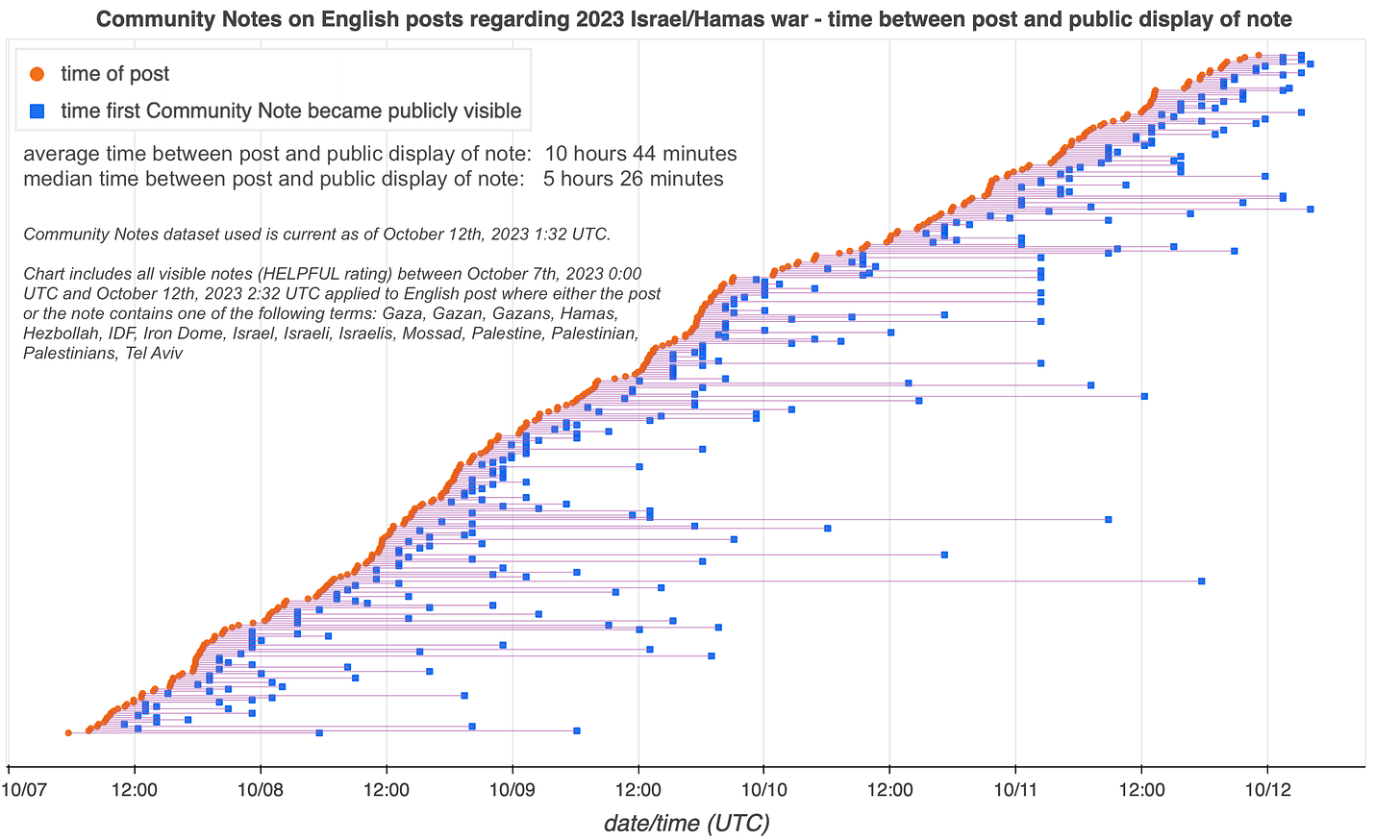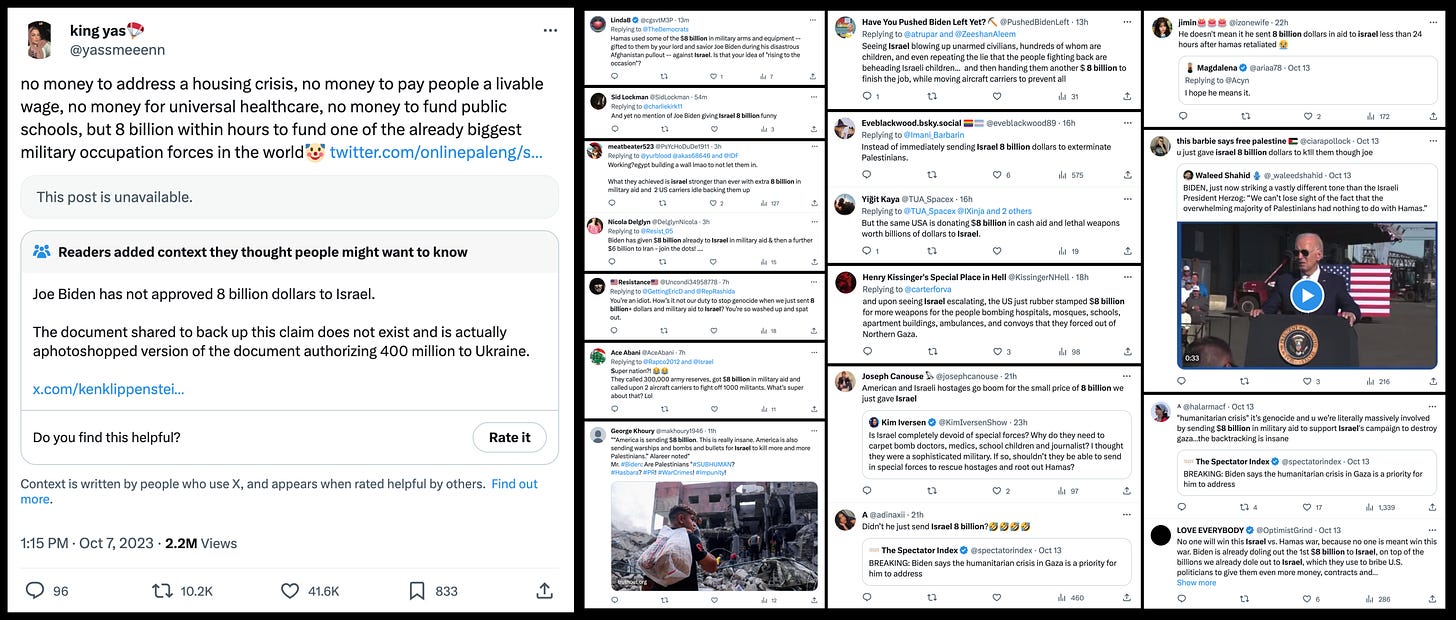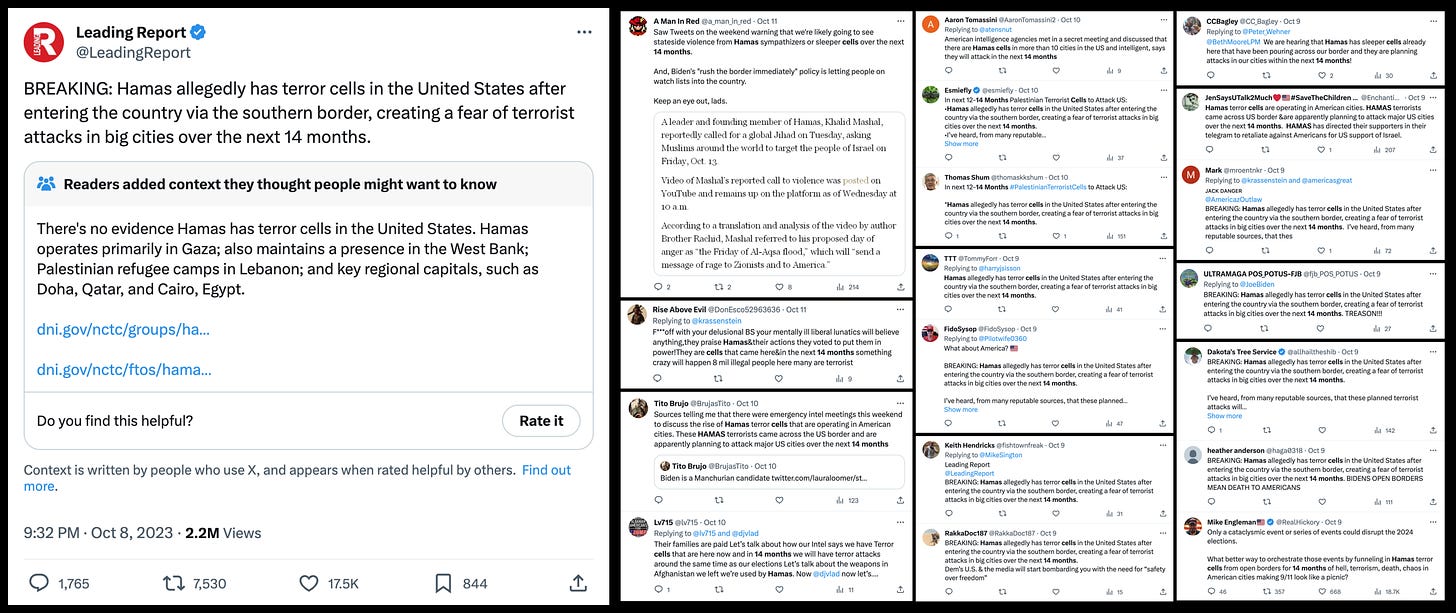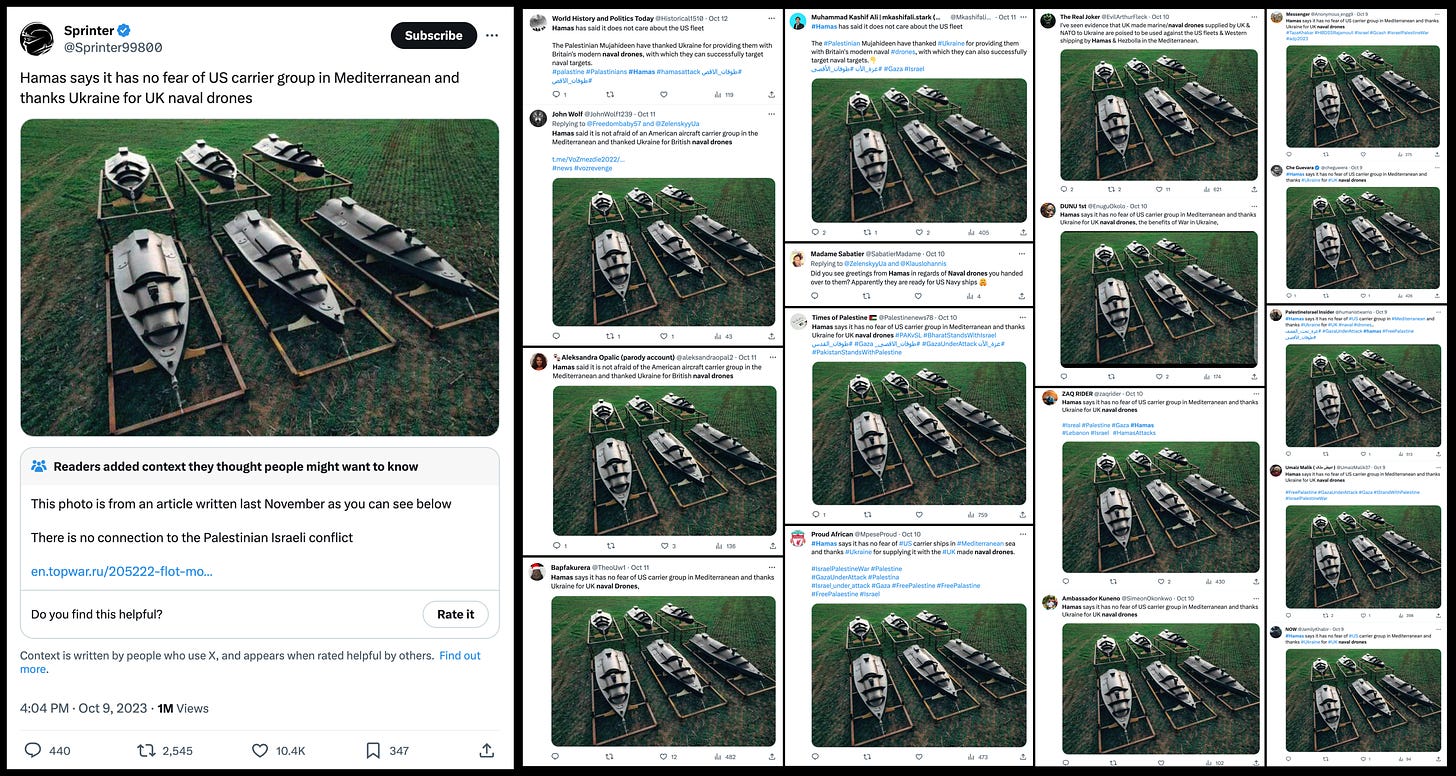Community Notes and war crimes
X's community fact checking system has thus far been inadequate in multiple ways at addressing the flood of online misinformation regarding the Israel-Hamas war
The recent violence in Israel and Gaza has been accompanied by a surge of misleading and false claims on social media platforms such as X/Twitter regarding various aspects of the war. Although X’s crowdsourced Community Notes fact checking system has resulted in some of the most popular false posts being labeled with additional context, it has struggled in multiple ways to address the flood of misinformation regarding the war. The sheer volume of posts has overwhelmed the pool of volunteers who write and rate notes, posts often go viral quite quickly and rack up massive engagement before notes appear, and the system is most effective at labeling individual popular posts and does not scale well to situations where a misleading claim ends up being repeated by large numbers of small accounts (organic or otherwise). Additionally, many of the accounts with viral false posts about the war are X Premium (Twitter Blue) subscribers, who may have a financial incentive to leave debunked posts online due to X’s ad revenue sharing feature.
The complete set of proposed notes and their rating history are publicly available for download and analysis. The available data generally lags a couple days behind the current state of the platform; all numbers in this article are based on Community Notes data that is complete through October 12th, 2023 at 1:32 UTC. Content likely to be related to the war was detected by filtering the dataset to notes attached to English-language posts where the text of the note or post contained at least one relevant keyword, which resulted in 4008 proposed notes on 2037 posts. (Keywords used: Gaza, Gazan, Gazans, Hamas, Hezbollah, IDF, Iron Dome, Israel, Israeli, Israelis, Mossad, Palestine, Palestinian, Palestinians, Tel Aviv.)

During the first 5 days of the conflict, just 438 Community Notes (attached to 309 posts from 223 unique accounts) earned a “HELPFUL” rating and ended up being displayed publicly to users. Although it’s impossible to know what percentage of content about the war this represents, the fact that trending topics related to the conflict have routinely involved hundreds of thousands or even millions of posts suggests that a few hundred posts is just a drop in the bucket. The visible notes were generally attached to popular posts — the 309 posts in question earned a combined total of 2147081 likes, an average of 6948 likes per post. The majority of the posts that earned Community Notes (222 of 309 posts, 71.8%) came from paid X Premium/Twitter Blue subscribers, and the majority of the accounts posting them (147 of 223, 65.9%) are X Premium subscribers, who are potentially earning a share of X’s ad revenue based on the number of times their posts are seen and who therefore have a financial motive to never delete misleading content. (Overall, roughly 7% of posts that received Community Notes were deleted during the period studied, but there’s no reliable way of knowing how many of these posts were related to the Israel/Hamas war.)

Another issue with Community Notes as a primary line of defense against misinformation is that in its present form it simply doesn’t handle situations where large numbers of small accounts repeat a false claim. There are two reasons for this: Community Notes in most cases requires someone to propose a note on every single post on which they want a particular fact check to appear, and only notes on popular posts reliably get enough votes to be rated “HELPFUL” and displayed to the general public. X has begun implementing a feature to automatically label all instances of a given piece of media once a post containing the media earns a visible note, but thus far this feature seems only partially functional for video and almost completely inoperative for photos. It also doesn’t help with false claims that occur primarily in text form.
A complicating factor to both analysis of Community Notes data and the ability of researchers, fact checkers, and journalists to make sense of social media during major crises is X’s decision to lock API access behind a pricey paywall. Without the data provided by this API, the free Community Notes data is less useful; although the data contains the IDs of the posts with notes, it does not contain the text of the posts or any link to the accounts that posted them. When Community Notes was first introduced, this information could easily be fetched via the free Twitter API, but it now requires more cumbersome methods and manual effort. Additionally, the absence of API access makes it impossible to determine certain useful denominators, such as the total number of posts containing keywords related to the war.






Are you concerned about Community Notes's performance on non-English posts? I would think that, to the degree that people in the Middle East are using X, performing a similar analysis for non-English speakers in the region would be even more enlightening.
Yah I totally disagree. You are applying the wrong lens. Truth emerges over time. People that actually use twitter and not just armchair critics understand this. All of the good news was on X the last 2 weeks. Meanwhile formerly respected news sources like the New York times got essential facts completely incorrect like the hospital bombing and put out false information and were very slow (at best) to put out updates.